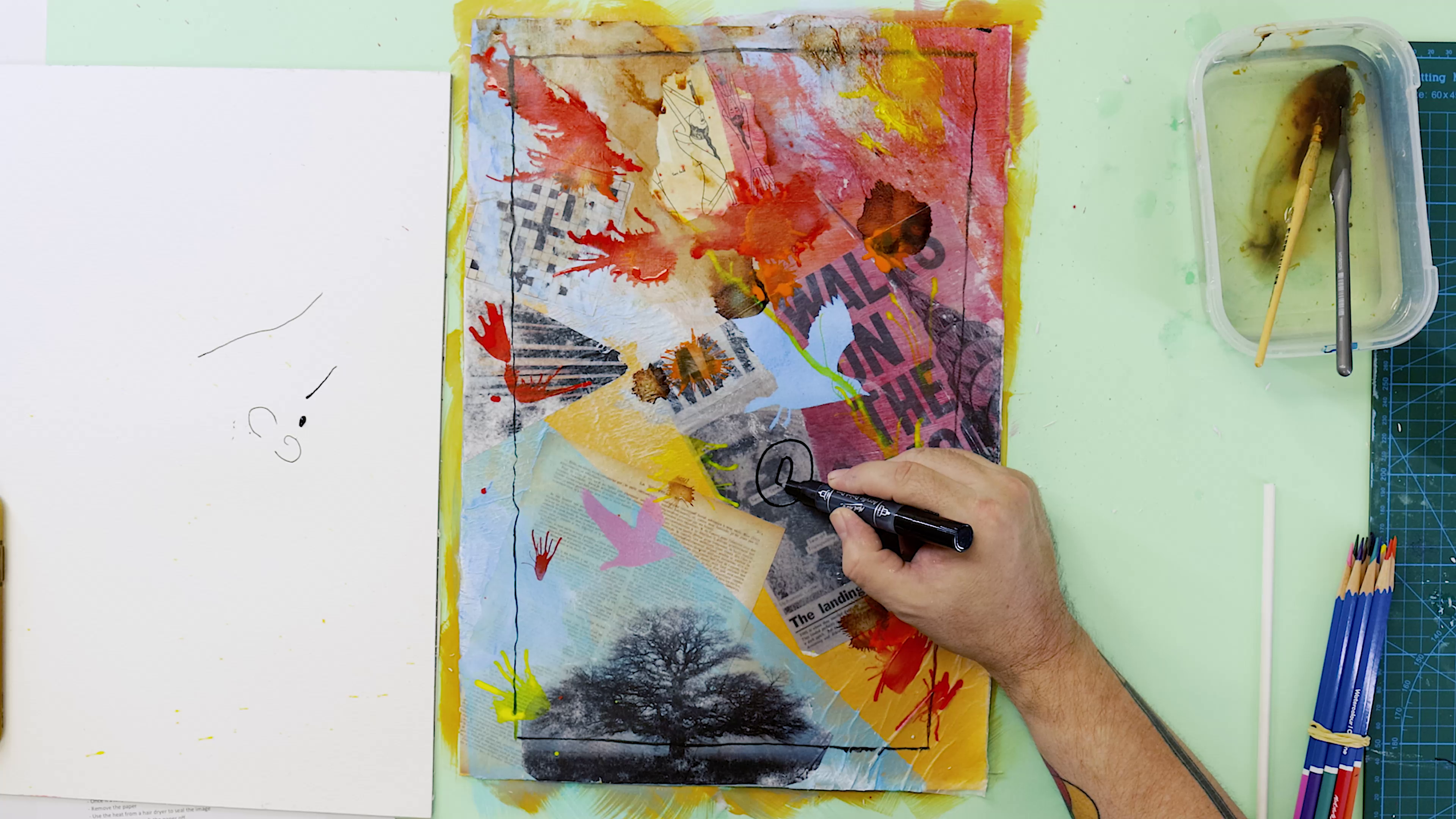Wanting to get into mixed media but not sure where to start? You’re in the right place! From collage to stencilling and image transfers, we’ve bundled up 10 mixed media techniques to help you get started.
1. Mixed media layering:
When it comes to mixed media, it’s all about light layers. Keep your work translucent by diluting your paints either with water or acrylic flow medium to create thinner coats. If you’re using coloured paper or hand drawn elements, reach for crepe paper or tracing paper to build up those lighter layers. With mixed media layering, it can be hard knowing where to start, so keep complementary colours in mind for balance, and the rule of thirds for harmonising your work.
2. Mixed media collage:
Collaging is great for mixed media work because it adds texture, visual interest and it’s super simple to do. For mixed media collage, use scraps of paper from newspapers, magazines or catalogues and work with thin layers. The secret for a smooth surface is to place gesso or a thin coat of acrylic over the top afterwards (you can thank us later).
3. Using masking tape:
It's a household staple and it’s got a bunch of uses when it comes to mixed media techniques too. Masking tape is great for blocking in areas, for creating clean lines or keeping work contained and framed. You can remove the tape once you’ve finished painting a certain area or keep the paint on for added texture.
4. Spreading paint:
Sure, you can use brushes but why not try spreading paint with a cloth or a sponge? Use a mix of primary colours so the colours blend easily together as you work. A spare cloth can be used to wipe back any layers too. Or use a spare piece of copy paper to blot and absorb any excess paint. A palette knife can also be used for spreading paint or blocking areas in as well. Whether you use a cloth or even a comb, the whole idea is to get creative with it!
5. Stencilling:
Whether you want to add a Banksy vibe to your artwork or you’re wanting a particular silhouette, why not try stencilling. It’s easy to think you’ll need a bunch of stencils, but you can actually make your own stencils with just a hobby knife and cardboard. Trace or draw your design on cardboard and then cut it out with a hobby knife. Secure the stencil with some tape, then use either a sponge or a soft, dense brush, paint from the outside inwards.
6. Image transfers:
Can’t get a particular look using a collage? Image transfers are great for mixed media work too and you can easily add your own photos, drawings or typography. For this mixed media technique, keep in mind that the image will be reversed once it’s applied, so you may need to edit the image to ‘mirror reverse’ if you’re using words.
To image transfer, cut around the image first, then use a gloss medium and apply the paste all over the image. Once it’s fully wet, place the image down with a piece of plain copy paper on top and press this down too. Remove the paper, using a sponge and a little water to rub the paper off. Then use some heat from a hair dryer to seal it.
7. Drawing inks:
Drawing inks are great for creating spontaneous, random effects that are difficult to create purposefully. Think hand lettering, watercolour effects, drips, splotches or puddles. For drips, grab a drawing ink and add a bit of extra water to your inks. By diluting them with water, the consistency will change causing them to “run” like a dye on the page. For a splatter effect, blow the inks around with a straw or use the side of a brush or dip pen, and splatter the ink onto the paper with a brush.
8. Sgraffito:
Italian for “to scratch” this mixed media technique is great for adding extra details or for a bit of visual interest. For Sgraffito, you can use the end of a paint brush or a palette knife to apply scratched in effects with impasto, paint, oil pastels or acrylic mediums. Experiment with zig zags, parallel lines, hatching, outlines or shapes.
9. Impasto:
Looking for a way to add texture or accentuate an area? Try impasto. Mix this medium in with your paints to thicken the consistency or apply it with a palette knife. Because of the thickness of the medium, impasto is best added after gluing and collage, so hang tight and apply this towards the end of your work.
10. Drawing with paint pens
Don’t forget the paint pens! Acrylic paint pens are great for those last minute highlights, free-style drawing, accentuating areas or for bringing objects more to the foreground of your work. Get creative and see what you come up with!
Looking for more? Check out our mixed media tips for more tips and tricks, or get inspired by mixed media artist Adeline Shatsala.
We hope that you feel inspired to try these mixed media techniques too. Try it for yourself and #montmarteart or tag us @montmarteart on Instagram or Facebook, we’d love to see what you create.





























